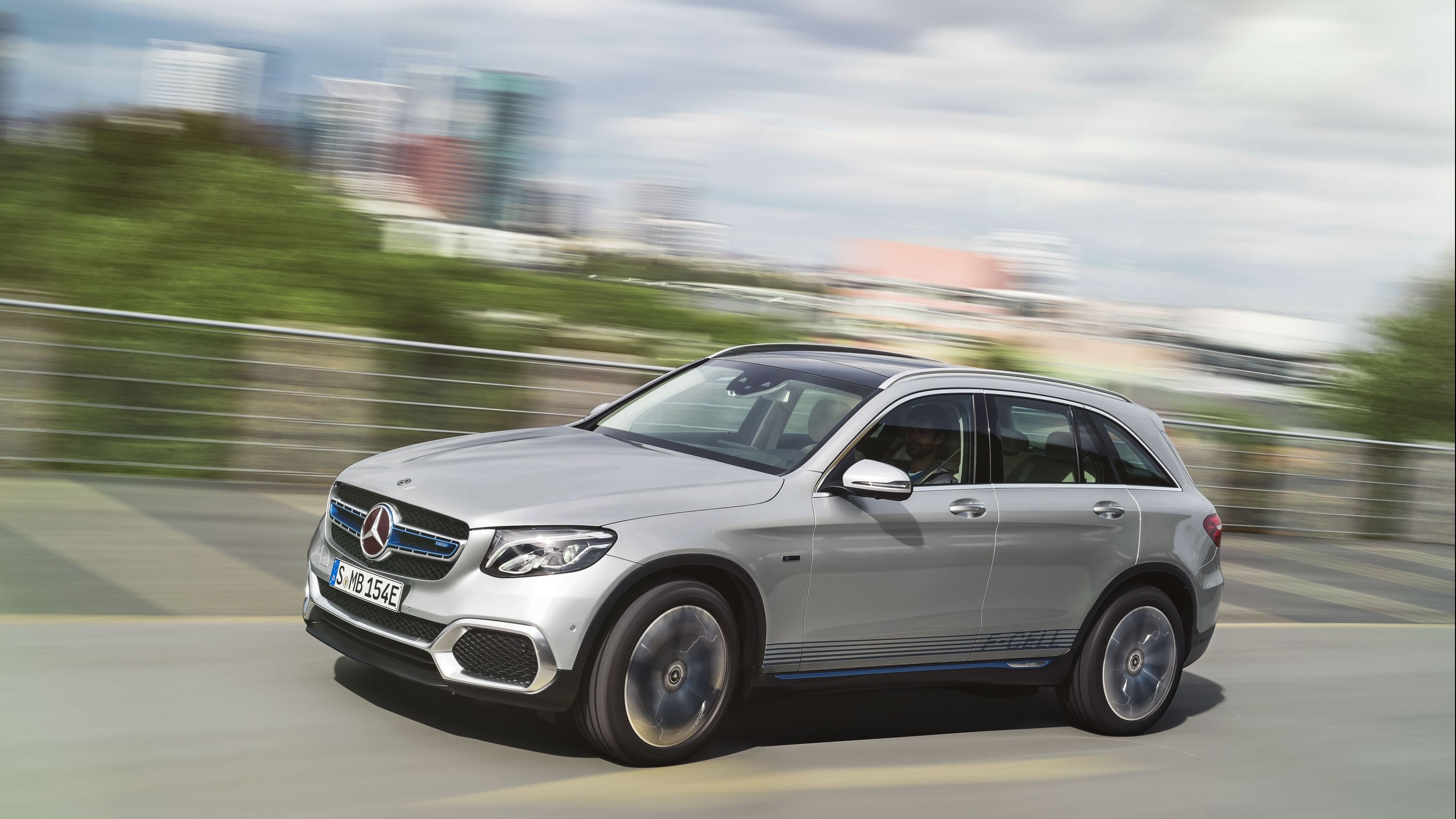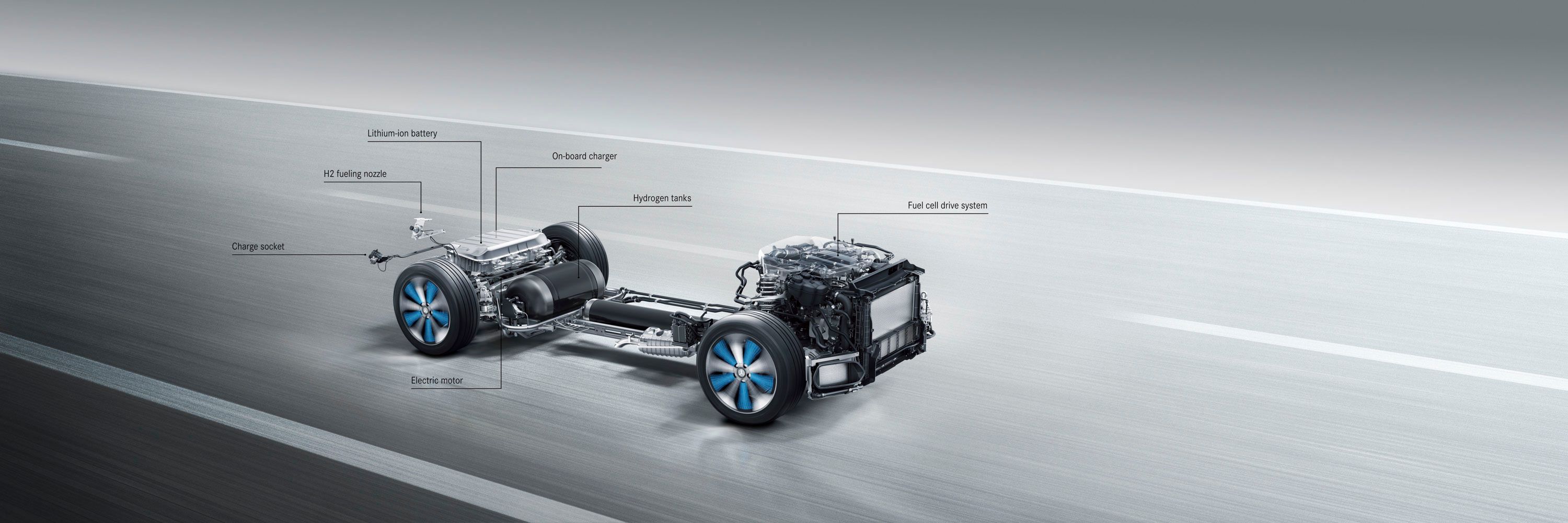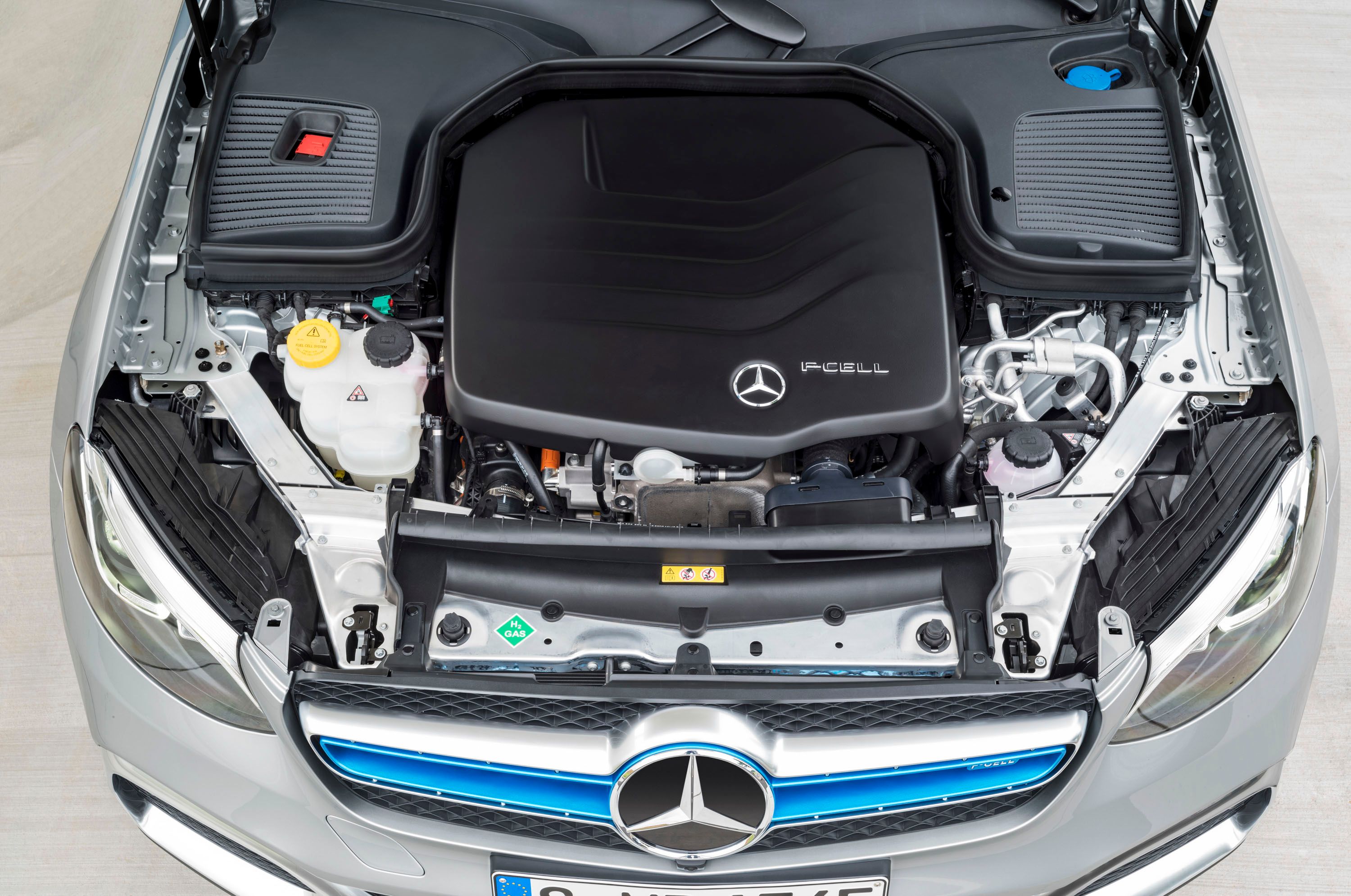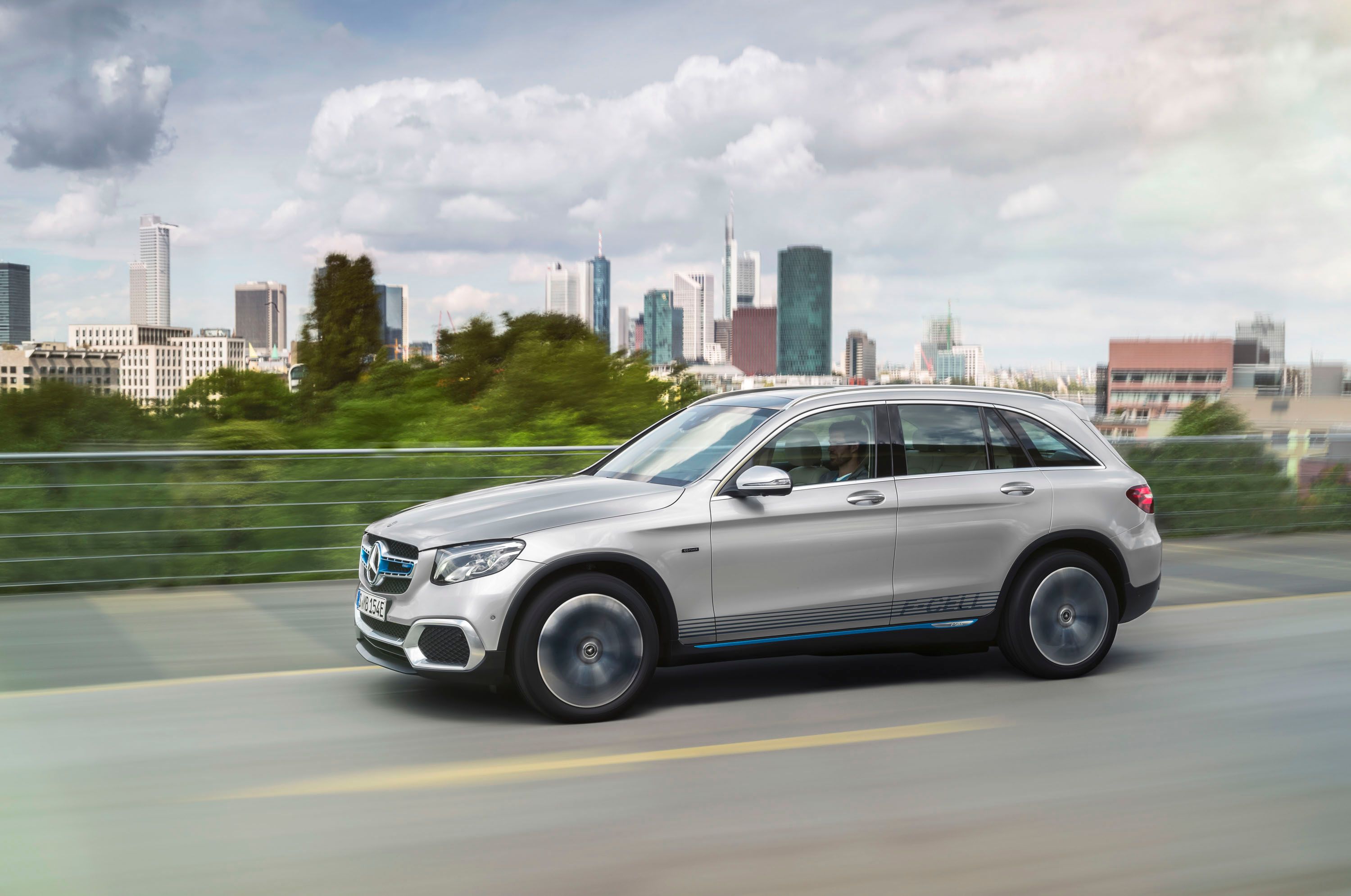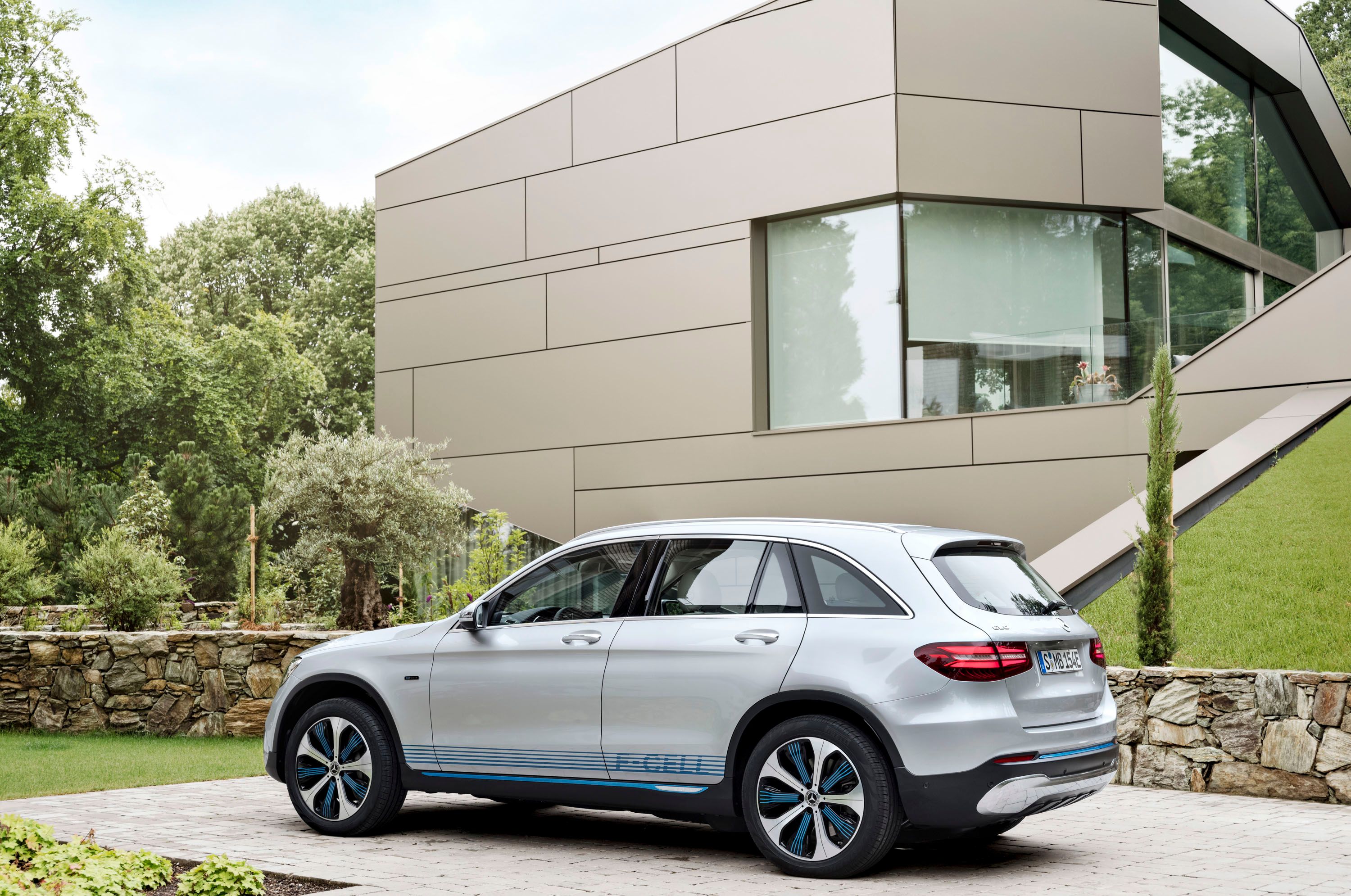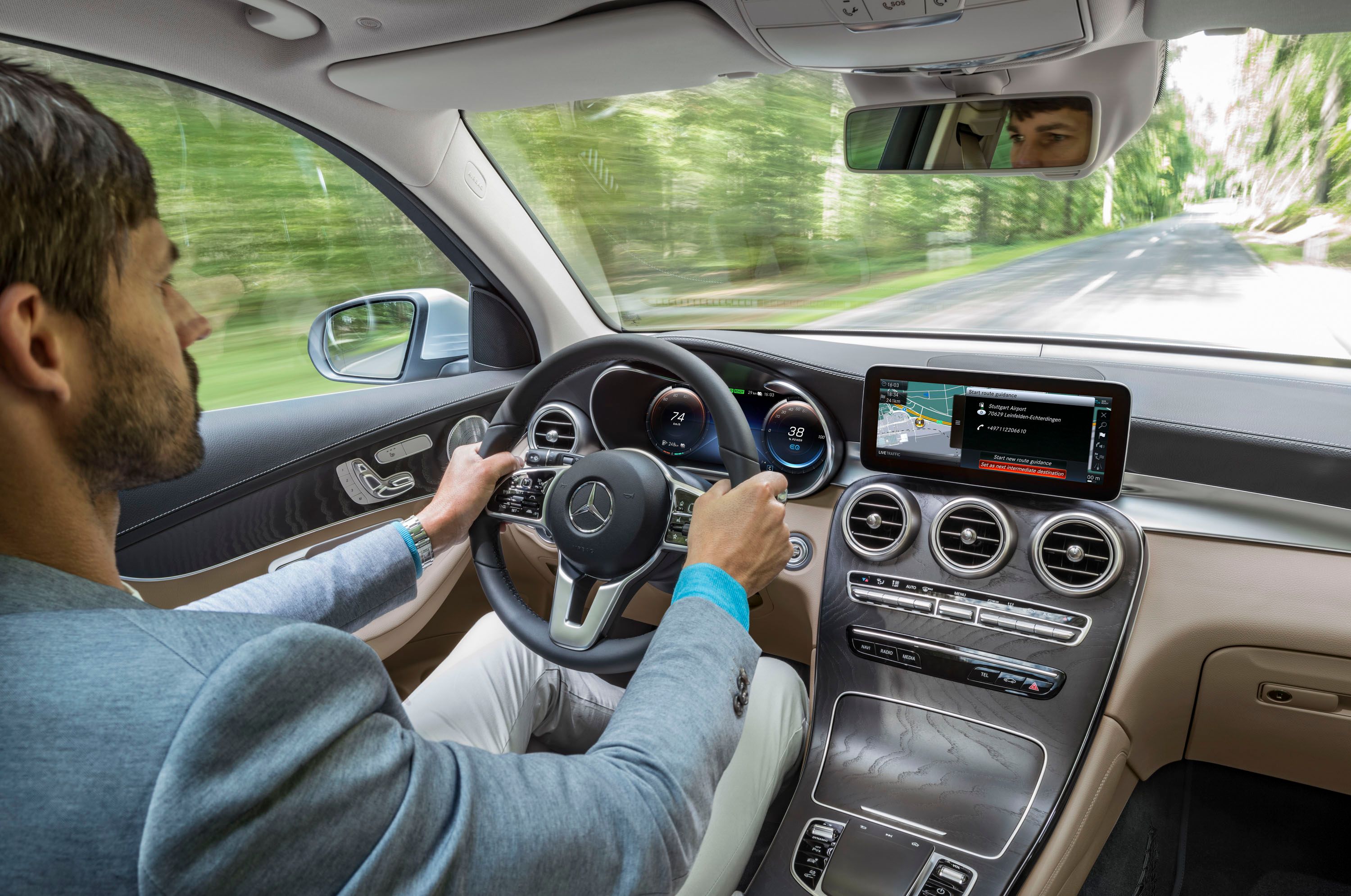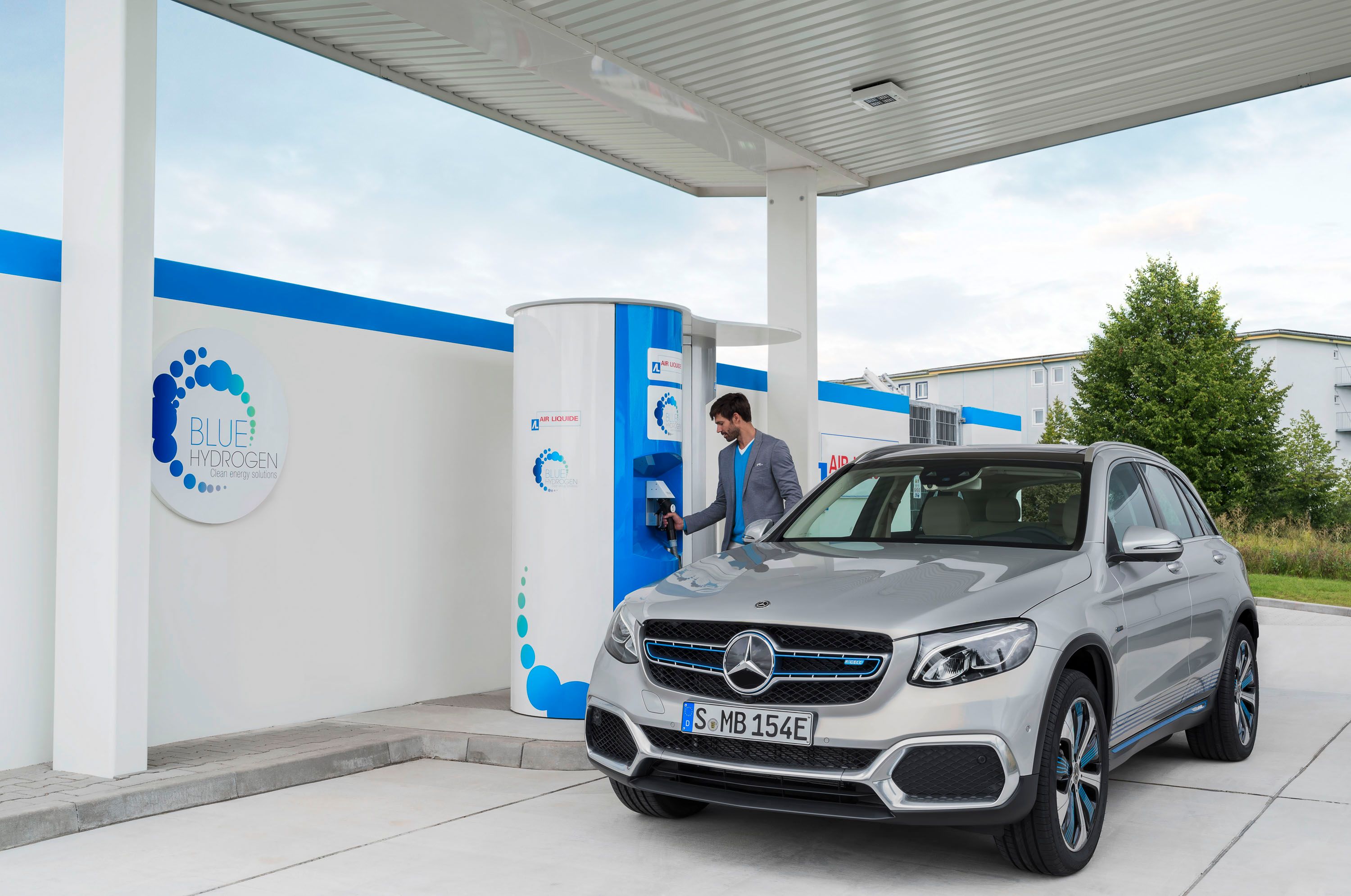The latest crop of green alternative passenger vehicles is making the rounds at this year’s Frankfurt Motor Show, and Mercedes is getting in on the action with a brand-new hybrid SUV. It’s called the GLC F-Cell, and it’s touted as the world’s very first production-ready hydrogen hybrid vehicle. Flying the German automaker’s EQ Power banner, also known as the go-to branding for Merc’s various green solutions, the GLC F-Cell is essentially an SUV that combines plug-in all-electric battery power with hydrogen fuel cell power. The marriage of these two alternative power sources hopes to find a synergy whereby benefits are maximized and disadvantages are minimized, combining the quick refill times of hydrogen power and the long-range capability of electrified assistance, all without the traditional explodey dino juice normally associated with “typical” hybrid vehicles.
The new SUV is part of the latest Mercedes product strategy to produce 10 new battery-electric models by the year 2022. The GLC F-Cell is also a modern addition to the Mercedes CASE strategy, an acronym that stands for, Connected, Autonomous, Shared & Services, and Electric. And while the SUV has yet to show anything terribly noteworthy in terms of connected, autonomous, or sharing features, the novel hybrid stuff is more than worthy of the attention of anyone interested in powertrain technology development. Read on for the specs and details.
Continue reading to learn more about the GLC F-Cell.
Hydrogen Specs
To complete the GLC F-Cell’s hybrid powertrain, Mercedes pulled technology originally developed for the B-Class F-Cell from 2010. However, the new SUV’s H2 tech advances the original with as much as 40 percent more output, while also reducing overall dimensions by as much as 30 percent. The latter of these advances allows the entire fuel cell powerplant to be shoehorned into the engine compartment and mounted in a fashion similar to a traditional gas engine. Mercedes also managed to reduce the use of platinum, thus lowering costs
Further space saving techniques include mounting the carbon fiber H2 tanks under the vehicle floor. Estimated time to fill up is about 3 minutes, more or less matching traditional gas-powered vehicles in terms of convenience. Assuming you can actually find an H2 station, that is.
Battery Specs
Mated to the H2 fuel cell is a traditional asynchronous hybrid drive system, with a rear-mounted lithium ion battery rated at 13.8 kWh of capacity. Offering a standard 7.2-kW charger, the battery can see a recharge in just 1.5 hours when plugged into the right external power source.
So, How’s It All Work Together?
Peak output from the H2 hybrid is rated at 147 kW, or roughly 200 horsepower, while torque is rated at 350 Nm, or 258 pound-feet. Top speed is electronically limited at 160 km/h (99 mph). While these numbers are indeed rather conservative, the focus here is obviously on making the most of the available energy sources – efficiency trumps speed, in this case. With that in mind, Mercedes says the car can go 437 km (272 miles) with 4.4 kg (9.7 pounds) of hydrogel fuel onboard. Top off the battery at a plug, and you’ll see an addition 49 km (30 miles) of all-electric range. And assuming you can find a convenient source of H2 fuel, that’s not too shabby.
Boosting the efficiency is a braking energy reclamation system, plus various driving modes to meet the demands of the driving situation at hand. These include Eco, Comfort, and Sport, all pretty self-explanatory. Mercedes is also adding four operating modes that allow for fine-tuning of the various power sources, including Hybrid, F-Cell, Battery, and Charge. Hybrid mode takes power from both the electric and H2 sources, F-Cell is exclusive to the hydrogen source, Battery is all-electric, and Charge sends charge to the battery for extended range before a hydrogen refuel, plus a boost to “power reserves for uphill or very dynamic driving.”
What About Styling And Aesthetics?
When the production version of the GLC F-Cell is released, expect the usual updates to exterior styling, plus blue highlights on the front grille and wheels, side skirts, and rear bumper, all of which allude to the vehicle’s alternative energy philosophy. An air suspension set-up in the rear and coil springs in front will keep it shiny side up, while aero-optimized 20-inch wheels will reside in the corners.
Okay, Fine, But Is It Still A Mercedes?
So far, yes. In addition to the usual lineup of high-quality materials and luxury features (automatic climate control and pre-entry climate adjustments, heated seats and mirrors as standard, piano lacquer interior trim, wood paneling, etc.), the GLC F-Cell promises lots of advanced technology, including a spread of safety stuff, such as active cruise control, lane keep assist, blind spot monitor, and parking assist. Infotainment will include a 12.3-inch display behind the steering wheel acting as the digital gauges platform, while a 10.25-inch screen in the center stack will cover the rest of it. Handwriting recognition will be used for user inputs.
What About The Viability Of Hydrogen?
That’s a fair question. While a refill on H2 stuff will only take a few minutes, actually finding an H2 station nearby is not exactly an easy task. Of course, Mercedes is quick to point out that H2 stations are becoming more and more widespread, something the automaker is assisting with directly thanks to a joint venture with the German energy equipment company H2 Mobility, but we’re still a long ways from enjoying the same availability as gasoline refill stations.
That said, maximizing the range offered per fill-up with hybrid assistance is a great way to increase the viability of hydrogen in the long run. The big question now is adoption – will customers get behind the hydrogen movement with enough fervor to justify something like the GLC F-Cell? That remains to be seen.
References
Read our full review of the 2016 Mercedes GLC-Class
Read our full review of the 2010 Mercedes-Benz B-Class F-Cell
Read the latest news from Mercedes

